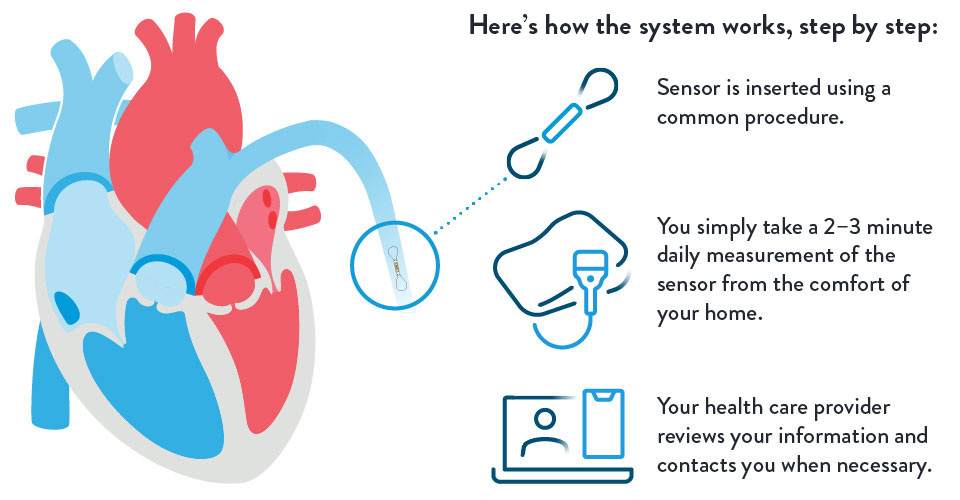Talk to Someone Who Has the CardioMEMS HF System
To get a first-hand perspective about the benefits of being remotely monitored, you can speak one-on-one with a patient whose life has improved by using the CardioMEMS HF System.
Each time blood passes through your heart, the right ventricle of your heart (the chambers on the lower right side) pump blood to your lungs through a large blood vessel. That large blood vessel is the pulmonary artery.
The blood pressure of your pulmonary artery reflects the amount of force your heart is exerting to pump blood from your heart to your lungs. If your heart has to work harder to pump that blood, then your pulmonary artery (PA) pressure goes up.
Pulmonary artery pressure (PAP) monitoring is a way to track early signs of worsening heart failure. It involves a small, implantable sensor that measures pressure inside the pulmonary artery. The pulmonary artery is the blood vessel that carries blood from your heart to your lungs. By detecting changes in pressure before symptoms appear, doctors can adjust your treatment sooner to help prevent hospitalizations and manage heart failure more effectively, all from the comfort of your home.1
The monitor is placed during a common right heart catheterization, typically in a hospital. Most people go home the same day. Here’s how it works:


The CardioMEMS™ HF System gives your doctor insight into how your heart failure is progressing at home, wherever you are, without an office visit. By monitoring changes in pressure inside your pulmonary artery, your care team can identify signs of worsening heart failure early and adjust treatment before symptoms get worse. It’s a proactive way for you to take an active role in managing your heart failure and reduce the chances of unexpected hospital visits.2

CardioMEMS helps you stay ahead of your heart failure symptoms by giving your care team daily insights into your condition. Regularly monitoring your condition may lead to treatment decisions and fewer hospital visits.2


Changes in pulmonary artery pressure are an early sign that heart failure may be getting worse. If your doctor can see these changes early, they can make adjustments to your care or medications to help manage your condition.1
Other signs of worsening heart failure like shortness of breath or swelling, often appear too late to prevent hospital visits. That's why monitoring pulmonary artery pressure can be an important tool in staying ahead of symptoms.1

Remote monitoring is a way to manage heart failure from the comfort of your home. It helps you and your doctor track your condition every day, even between visits. The information from your daily readings gives your care team a clearer picture of how you're doing and helps them adjust your treatment if needed. Catching problems early can prevent symptoms from getting worse and may help you avoid an unexpected trip to the hospital.1

Monitoring pulmonary pressure




MAT-2116641 v6.0